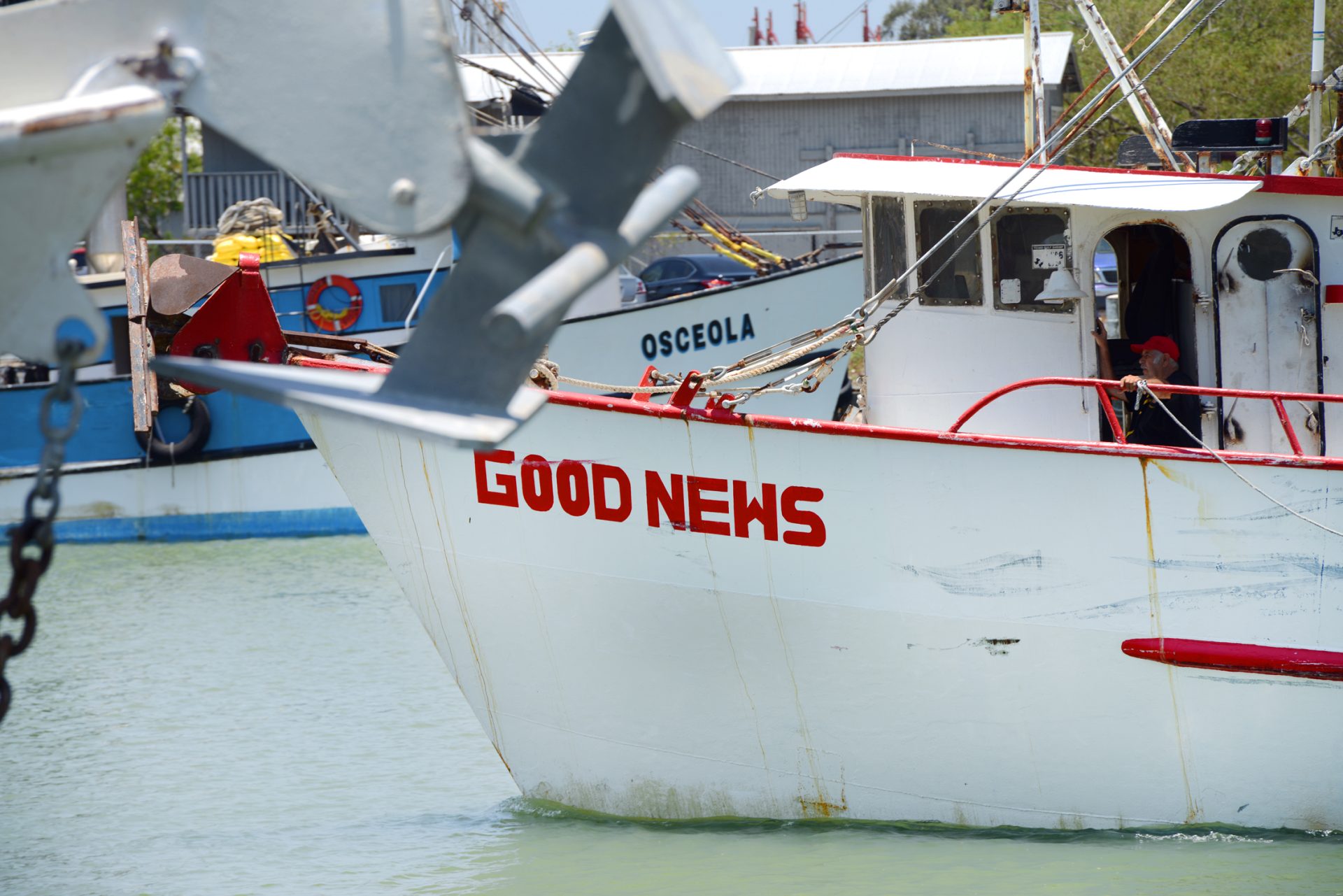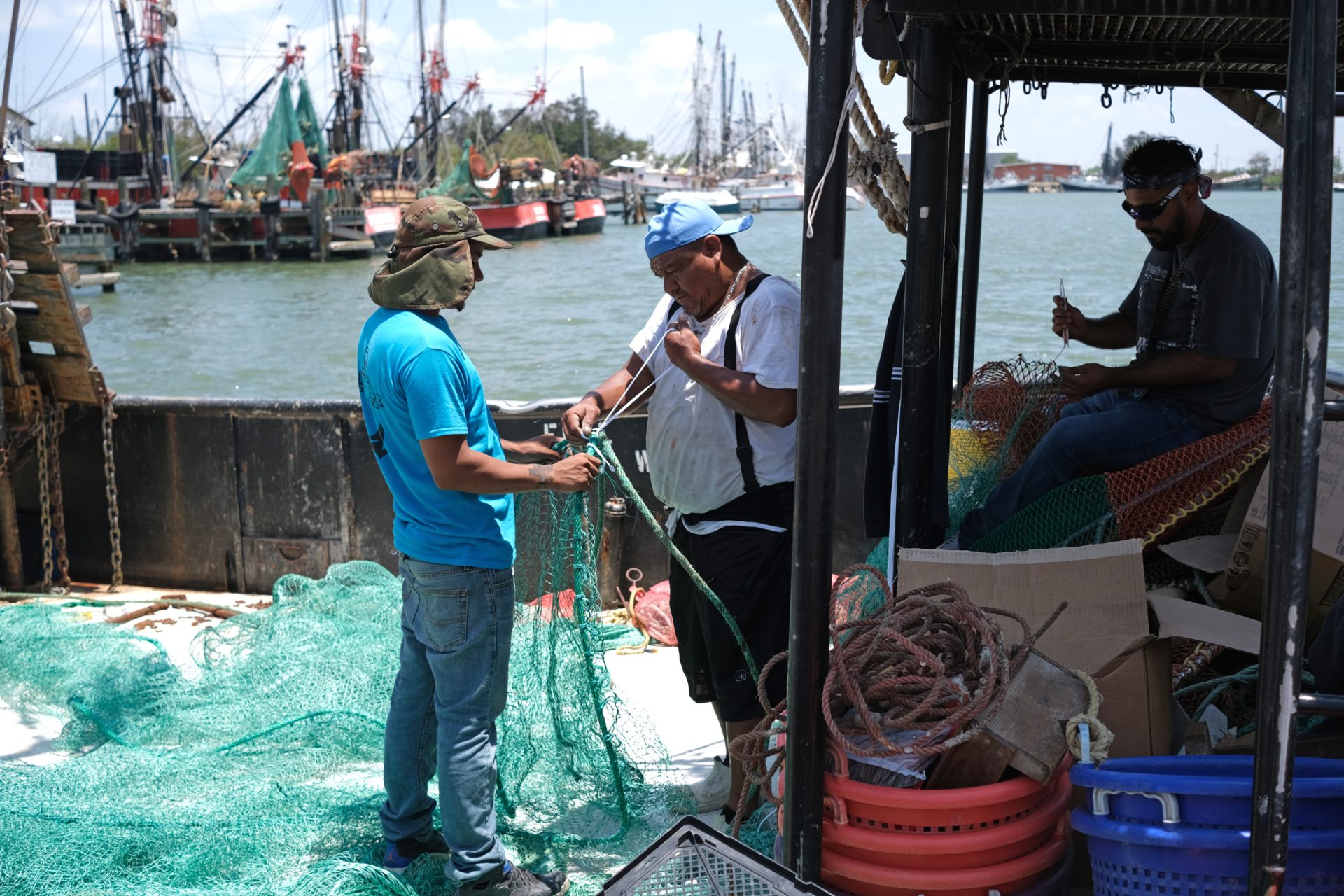On the cusp of the Texas shrimp season’s opening on July 15, the state’s shrimp industry is facing some of the most serious challenges of its history, and the Brownsville-Port Isabel fleet is not immune.
Andrea Hance, executive director of the Texas Shrimp Association, headquartered at the Port of Brownsville, said in April that the high cost of fuel was preventing a lot of boats from going out. The price of fuel has fallen in recent weeks, though in a case of unfortunate timing some owners filled up before prices starting dropping, she said.
With a typical fuel tank capacity of 15,000 to 20,000 gallons, 10 or 15 cents either way makes a big difference, said Hance, who owns two shrimp boats with her husband, Preston. One of the boats is in dock for repairs and the other was filled up at $4.40 a gallon of diesel — before it started coming down, she said.

On top of excessive fuel costs, the price-per-pound for shrimp is so low right now that even at $3.50 a gallon for fuel shrimpers can’t make a profit, since $3.50 is roughly what shrimp buyers are paying for Gulf shrimp these days, Hance said. It’s among the lowest prices she’s seen though not the lowest, she said, recalling that in 2009 shrimp prices averaged about $2.50 the entire year.
“We lost a lot of money that year,” Hance said.
Still, four months ago the average price was around $8 a pound, she said. Hance has little hope prices will rebound within the next 30 days, which is how long most shrimpers will spend fishing in Texas waters, many of them having already returned from Louisiana waters, which saw a bountiful harvest this year.
“The prices were higher in 1985 than they are now,” she said. “They stayed relatively the same for 30 years.”
One of the main factors driving down prices is a massive wave of shrimp imports from countries like India and Indonesia, Hance said. A large percentage of it was bound for China, which rejected it after detecting traces of COVID-19 on packaging, so it was diverted to the U.S. market, she said. Hance said she’s more concerned about what’s in the shrimp itself, though the Food and Drug Administration doesn’t appear to be as worried.

“They just let it come in,” she said. “Less than 1 percent is ever tested. Our market is saturated right now with imported shrimp. … We’re on track to almost double what was imported last year, close to 2.5 billion pounds of shrimp.”
That drives down the price of wild-caught Gulf shrimp, only 140 million pounds of which is harvested and sold each year, Hance said. Even so, it’s still more expensive retail-wise than imported shrimp, and she can’t blame restaurants for buying imported, even if the quality isn’t there, she said.
“We were hanging in there when the price disparity between wild-caught and imported was about $2 to $3,” Hance said. “That’s manageable. But right now it’s around a $5 to $6 difference, and that’s hard for a restaurant to choose wild caught when they can get that shrimp so much cheaper.”
She said she’s pushed for years as TSA head for the state to fund a branding campaign marketing Texas Gulf shrimp as a superior, sustainable alternative to imported, but has had little buy-in from the state, much less the individual operators who make up the industry.
With the weather against them economically speaking, the smaller operators like Hance and her husband have to sell their shrimp right away, even at a loss, to cover expenses, though larger operators are in a position to wait until prices improve, she said.
“Some of these guys that have deeper pockets and a larger fleet, they might hang onto their shrimp for a while,” Hance said. “It’s hard to do because it adds up. You have to have several hundred thousand dollars to do that.”

The effect of these multiple challenges is that a lot of owners these days are trying to unload their boats and federal fishing permits, she said. In 1999-2000 there were around 5,000 Gulf permits operating and last year that number had fallen to about 950, Hance said.
“I would venture to say this year we’re going to lose at least 100,” she said. “We’re getting down to the wire here. My husband and I talk about it all the time. He wants out. He has a full time job somewhere else. We’re OK, we just don’t want to lose any more money.”
Hance was hard put to find anything good to say about the state of the industry at present, but did offer one caveat, about the coming shrimp season.
“It is expected to be good,” she said. “We’re hoping that there’s a lot of shrimp out there right now. There’s a silver lining I guess, if you want to reach that far.”




